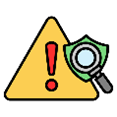Before exploring the preparatory steps for Hazard Identification and Risk Assessment (HIRA), it’s crucial to grasp why this process is indispensable. HIRA identifies and evaluates potential hazards and risks associated with a particular task, project, or environment. By conducting HIRA effectively, individuals and organizations can enhance approaches to mitigate or eliminate these risks, ensuring a safer and more secure environment.
Importance of HIRA
HIRA is not merely a procedural exercise, it’s an essential component of any comprehensive risk management plan. This section underscores the critical role of HIRA across various contexts, such as workplace safety, construction projects, and emergency response planning.

Critical Benefits of Conducting HIRA
- Prevention of Accidents: HIRA’s primary objective is proactively preventing accidents and incidents, potentially saving lives and resources.
- Cost Savings: Identifying and addressing risks in advance can lead to substantial cost savings by averting expensive accidents or project delays.
- Legal Compliance: Compliance with safety standards mandated by regulatory authorities often necessitates organizations to conduct HIRA.
Step-by-Step Guide to Preparing HIRA
Now that the significance of HIRA is clear let’s explore a comprehensive step-by-step process to prepare it effectively.
Defining the Scope
Begin by clearly defining the scope of the HIRA. Specify the task, project, or environment under assessment to ensure a focused and targeted evaluation.

Identification of Hazards
This step entails identifying potential hazards relevant to the defined scope. Hazards may encompass physical risks, chemical hazards, ergonomic issues, etc. Brainstorm and compile a comprehensive list of all conceivable hazards.

Risk Evaluation
Once hazards are identified, evaluate their associated risks. Utilize risk matrices or assessment tools to gauge the likelihood and severity of each hazard. This facilitates prioritization based on risk level.
Comments